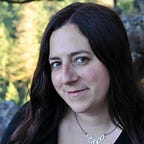Biodiversity Summit Bears the Weight of 8 Billion
This opinion piece was originally published in the Montreal Gazette.
We’re in the midst of an urgent biodiversity crisis, and world leaders are gathering in Montreal to create a landmark “Paris Agreement for Nature” to address it. COP15 will take place less than a month after global population surpassed 8 billion people. These are not unrelated milestones.
More than 3 million people have already been added to the planet since 8 Billion Day. Countless endangered species have been pushed closer to the brink of extinction. But the connection between population growth and biodiversity loss remains largely ignored.
The draft framework that will be debated at the biodiversity summit doesn’t mention human population pressure. And the media coverage of 8 billion people barely mentioned how population growth affects wildlife. We can’t tackle these issues if we’re not willing to face them.
In the past few decades, we’ve seen how our growing population has increased pressure on the natural world. Greenhouse gas emissions are pushing climate change toward irreversible tipping points; wildlife habitat is destroyed for sprawl and agriculture; once-thriving water sources that millions of people and wild animals rely on, like the Great Salt Lake in Utah and the Colorado River, are depleted.
None of this can be blamed on our numbers alone. Outdated policy, corporate greed, and a lack of accountability bear responsibility for much of the worst environmental destruction in recent decades.
But it’s also true that population growth is an immediate driver of these crises. Every person on the planet needs food, water, fuel, and a place to call home. Meeting these basic needs for 8 billion people puts a lot more stress on the environment than it did when we numbered 5 or even 7 billion — and many of us are consuming far more than we need to.
We can’t assume that the planet will continue to provide for our growing population when we’ve already overshot the resources the Earth can replenish. When we ignore the increasing encroachment of human society on wild places, we increase the risk of pandemics. Four billion people experience severe water scarcity each year, and nearly 1 billion don’t have enough to eat each day. Polluted air, water and soil increase risks of illness and death around the world.
But it’s not just about us. One million species will be lost forever in the coming decades if we don’t change course.
When a species goes extinct, it unravels threads from the intricate tapestry that makes up life on Earth. We depend on the beautifully complex ecosystems that keep us alive. The incredible biodiversity of this planet enriches our human experience. We have a responsibility to respect and protect other species, not just for our sake but for theirs.
Still, the extinction crisis threatens our very existence. The ecosystems held together by wild plants and animals provide oxygen, clean water, food, and medicine. We need pollinators to grow crops. Mussels to help filter rivers and streams. Carnivores to keep nature in balance. The list goes on, and we don’t know which cut thread will unravel a whole system.
World leaders must commit to stopping human-caused extinction beginning now. They must choose the future of wildlife over exploitation and profits.
As we face a future with more than 8 billion people, we must reject any efforts to use this moment to advance racist, nationalist, or other oppressive agendas. But we also have to embrace the reality that our fates — individually and as a society — can’t be separated from the fate of the planet and the species we share it with.
We can still put the brakes on the extinction crisis. By empowering women and girls and increasing access to education and reproductive healthcare, we can ensure that people only have children if and when they want. By centering Indigenous leadership, fully funding conservation laws like the Endangered Species Act, and holding polluting corporations accountable, we can protect wildlife and the places they need to survive.
As we continue to discuss what a population of 8 billion means for people and the planet, we need to recognize that demography and ecology are inseparable. We can create a world where everyone can thrive, but first we need to acknowledge that it’s not our world alone.
Stephanie Feldstein is the population and sustainability director at the Center for Biological Diversity.
